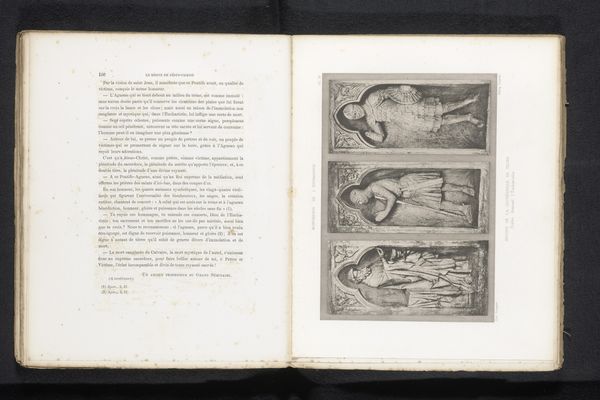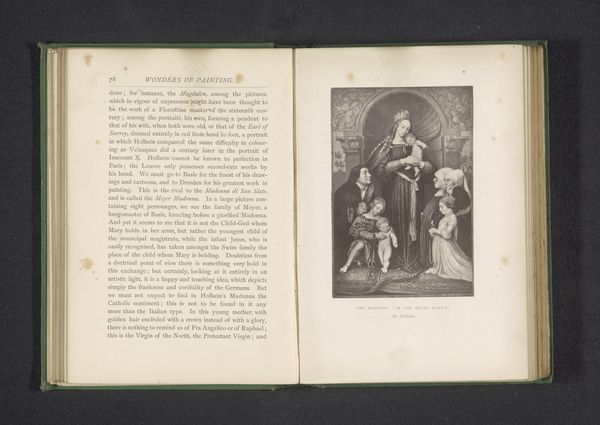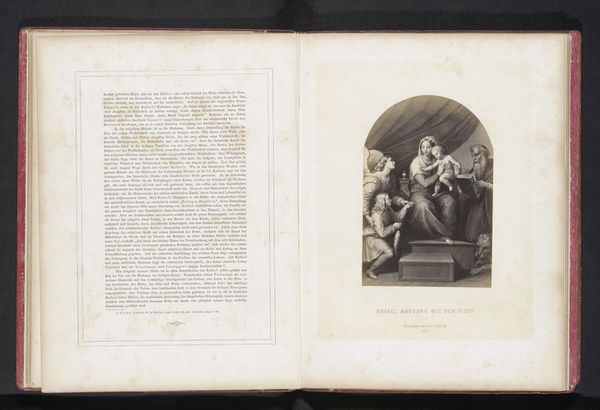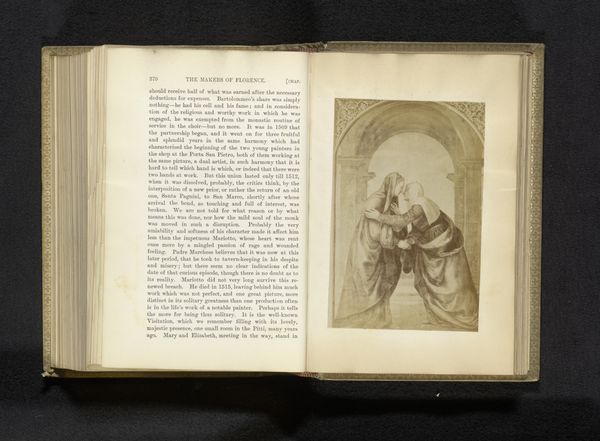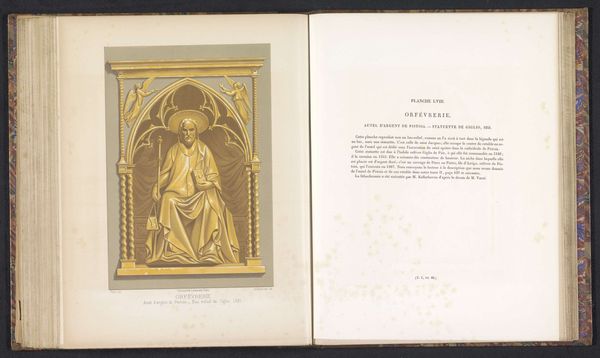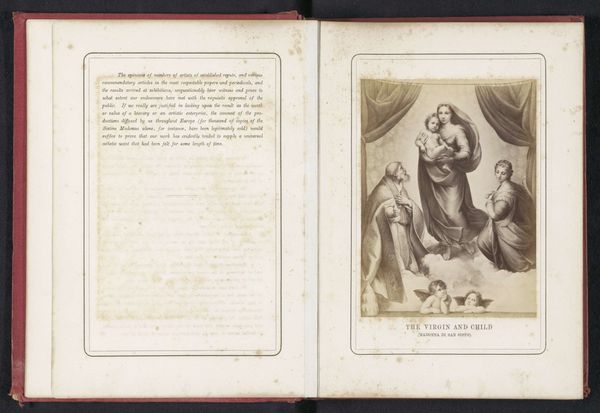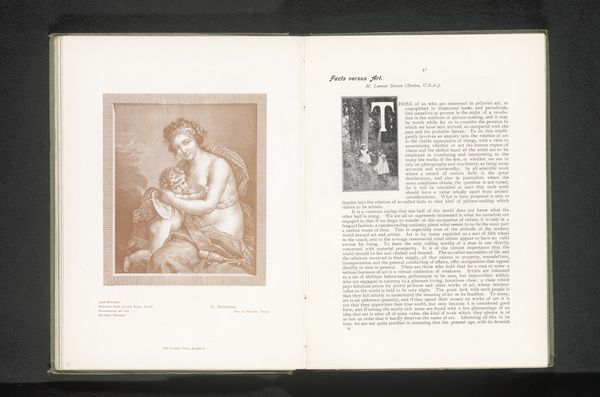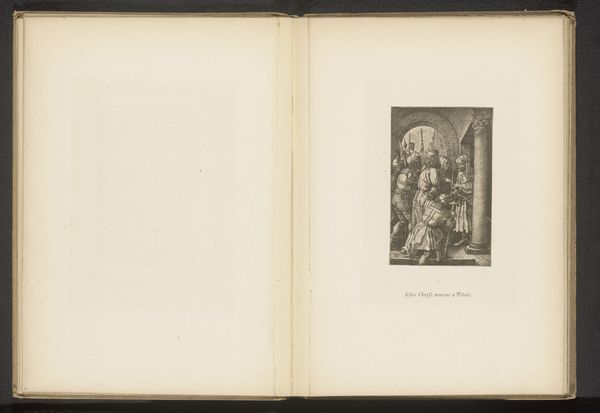
Fotoreproductie van een prent naar de Sixtijnse Madonna door Rafaël before 1861
0:00
0:00
print, engraving
#
aged paper
# print
#
typeface
#
landscape
#
figuration
#
personal sketchbook
#
journal
#
fading type
#
stylized text
#
thick font
#
handwritten font
#
italian-renaissance
#
engraving
#
historical font
#
columned text
Dimensions: height 184 mm, width 138 mm
Copyright: Rijks Museum: Open Domain
Editor: Here we have a photographic reproduction of a print depicting Raphael’s Sistine Madonna, dating from before 1861. It's presented as an open book, with the image on one side and German text on the other. The image itself feels quite serene, almost ethereal. What stands out to you when you look at this reproduction? Curator: The juxtaposition of image and text within this book format is really striking. It encourages us to consider not only the image itself but also its dissemination and reception. We must also account for the social and political context of image making in the 19th century. Reproductions like these were instrumental in popularizing and democratizing access to canonical artworks like Raphael's Madonna. Do you think this widespread availability changed its cultural meaning or impact? Editor: That's interesting, I hadn't thought about how access impacts the work. I suppose mass production could almost cheapen it in some way, by over-saturation? Curator: Exactly! It moved the image beyond the exclusive domain of the elite, potentially empowering the masses. But also consider how the interpretation may change as we move between original artwork and later versions/iterations, impacting the artwork's historical perception and influence on culture. What do you make of the German text alongside the image? Does it shape your understanding of its reception and meaning? Editor: I don't read German fluently, but I see it's a very dense text. Maybe it provided context or a theological interpretation of the Madonna? It adds another layer, connecting it to a specific cultural and intellectual framework. Curator: Precisely. This piece functions not just as an artwork but as a historical document, reflecting the complex interplay of art, religion, politics, and print culture in 19th-century Europe. The mass distribution is an undercurrent of democratization. Editor: That's given me a lot to think about. I initially saw a serene image, but now I see the complexities of its historical context and the shifting dynamics of art in society. Thanks. Curator: And thank you. Considering the role of art within culture is important. The conversation helps sharpen my own vision.
Comments
No comments
Be the first to comment and join the conversation on the ultimate creative platform.

